Highlights
- Star Trek has rapidly grown its scope on streaming, but it’s been eight years since the USS Enterprise last flew into movie theaters.
- Paramount’s space saga needs to return to theaters with a refreshed and ambitious approach that honors its huge legacy while appealing to new fans.
- Recent Paramount Plus series have shown that Star Trek is ready-made to take risks other sci-fi franchises cannot.
For a franchise dedicated to heading to the final frontier, Star Trek can be slow to reach movie theaters. The last Star Trek movie came out in 2016: the franchise’s 50th anniversary. Time is running out for a film to celebrate its next big birthday, and even then, that would mark the longest time without the USS Enterprise in movie theaters since 1979. Rumors have swirled about new movie ideas, from a direct sequel to Star Trek: Beyond to a Quentin Tarantino-led installment, but nothing has materialized.
X-Man veteran Simon Kinberg is the latest name attached to oversee a new series of Star Trek films, just as a merger between Trek-custodian Paramount Global and Skydance Media is firming up. With the franchise riding a new peak on the small screen while the rebooted movie universe is running on empty, it’s time for any new-look studio and creative team to make big changes to ensure Star Trek boldly heads back to cinemas.
Should Star Trek Continue With Kirk, Spock, And McCoy?
Older fans will remember Star Trek’s previous lean period. After dominating 1990s TV, the franchise fell from cinemas and TV in the 2000s. Star Trek: The Next Generation faded after four films, and Star Trek: Enterprise was canceled after four seasons.
When the franchise returned, it was with a refreshing and undeniably successful reboot. 2009’s Star Trek, helmed by JJ Abrams, achieved box office success and critical acclaim (94% on Rotten Tomatoes) as it did the unthinkable: recreate the Original Series for a new generation. At its warp core was a time trick that diverged the timeline at the point of Captain Kirk’s birth — a brilliant way to honor the established universe while creating a new timeline unconstrained by history.
Naturally, it wasn’t for every fan — that comes with the baggage of a 50-year history. But the well-known characters were brilliantly cast, and the new sheen on 60s Star Trek worked. The future looked promising in more ways than one, but the sequels didn’t take long to get into trouble. Star Trek: Into Darkness tried to take on the legacy of the classic sequel Star Trek II: The Wrath of Khan and came up short. Star Trek Beyond was well received but similarly misstepped as it stuck Kirk on a bike to make the unlimited potential of the galaxy look a lot like a dirt track.
It’s not impossible that the deft touch that made the 2009 film so enjoyable can be recaptured if the rebooted Enterprise returns. But the rollout of Star Trek series on streaming has shown plenty of room for different takes, time periods, and voices in this vast franchise. Big-screen Star Trek doesn’t need the original characters, but it does need to tell stories that appeal to long-time fans and introduce new audiences to the final frontier.
Leave Star Trek’s Past Behind
Most of Star Trek’s 10 series and 13 films occur in the 24th century, with healthy spells in the preceding two centuries and, with the latter seasons of Star Trek: Discovery, thousands of years into the future. Small-screen Star Trek hasn’t hung around since Discovery debuted in 2017. It has even revived Kirk, Spock, and Scotty on streaming while their cinema counterparts have been left on the shelf. That era is beyond a further reboot, and resetting other popular eras, like The Next Generation, would only confuse new viewers and alienate existing fans.
New Star Trek films must create space to introduce brilliant and entertaining new ideas that honor the legacy and don’t clash with a canon packed with massive retcons. The rumored subject of the Kinberg-led films, exploring the founding of Starfleet and humanity’s first steps into space, would struggle to do that. Plans to adapt the pivotal Earth-Romulan War of the 22nd century have fallen through before, and Star Trek has often done better going forward than back. Upping the anchors, a new film could do worse than jump beyond Star Trek: Picard and take a leap with a new crew and ship in the 25th century.
Recapture The Ongoing Mission
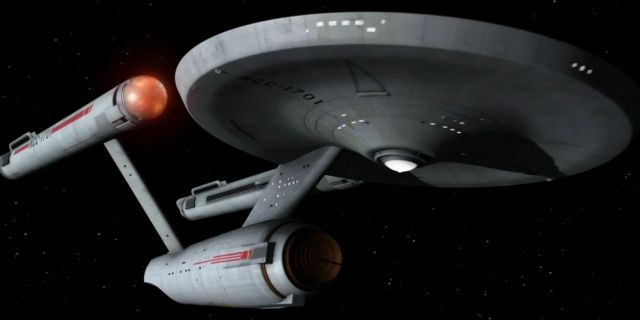
Star Trek has had great success on film, but it’s most comfortable on TV. That’s where its best storylines, characters, and villains started. It’s no surprise that Star Trek’s most successful spell tried to capture that sense of an ongoing story. After the 15-year in-universe leap between Star Trek: The Motion Picture and Star Trek II: The Wrath of Khan, the “Genesis trilogy” took in the death and resurrection of Spock before Kirk and crew headed back to 1986 to save Earth in the 23rd century.
While Star Trek Beyond leap-frogged the Enterprise’s five-year mission, the Kelvin movies missed the chance to draw fans into that kind of compelling saga. Paramount’s commitment to Star Trek movies could create an overarching web of stories packed with cliffhangers, picking up the best lessons from the MCU. It’s not about making a complicated continuity that will put off fans but creating momentum.
Get Back to Star Trek Basics
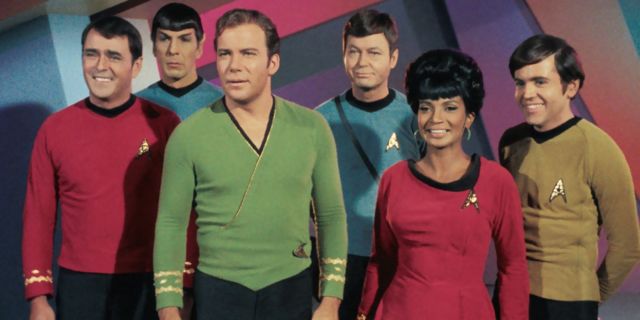
Star Trek’s creator, Gene Roddenberry, wanted to create sci-fi with a message, and the tussle between philosophy and sci-fi action, utopia and war, has been with the franchise ever since. While the most recent reboot was generally a success, it missed that message and became increasingly less relevant to its audience’s world, even when Kirk jumped on a motorbike. A diverse and progressive franchise, Star Trek is one of the best sci-fi properties at casting a light on the present from its enlightened future.
It’s no coincidence that Star Trek has enjoyed its biggest success on film when its message has been clearest. The environmental subtext of Star Trek IV: The Voyage Home was ahead of its time. It doesn’t need to be forced; just make sure the themes resonate. That is something Star Trek should do on impulse power.
Find Alien Perspectives
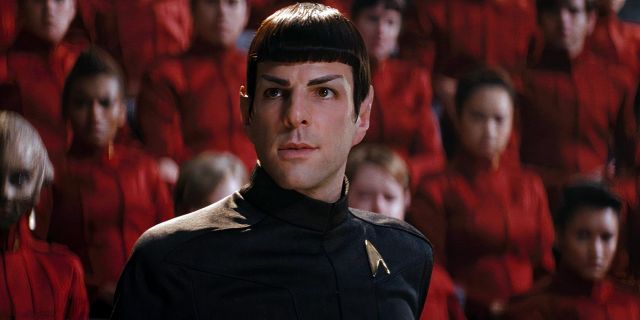
Star Trek’s world-building has given us fantastic alien races, starting with pop culture icon Spock. Star Trek: Deep Space Nine’s stationary base remains the highlight, adding huge amounts to races like Klingons and Ferengi. The ramifications of the painful history of Bajor’s occupation by Cardassia showed humans don’t have to be at the heart of the drama. To paraphrase Captain Kirk, alien characters can sometimes be the most human.
The different perspective doesn’t have to end there. The exploration of the final frontier isn’t just down to the officers of Starfleet. Explorers, settlers, pioneers, and more can draw out the essence of the original “wagon train to the stars” at the heart of Roddenberry’s original pitch (as recounted in the book The Making of Star Trek). Shows have moved since episodes saw the crew of the Enterprise drop into a new town every week. Still, the latest Western sagas, like studio stable-mate Yellowstone or Kevin Costner’s Horizon: An American Saga, show that there’s still room for big-screen frontiership. If it’s good enough for neo-Westerns, it’s great for Star Trek’s space-Western.
Build On Ideas, Don’t Remake Them
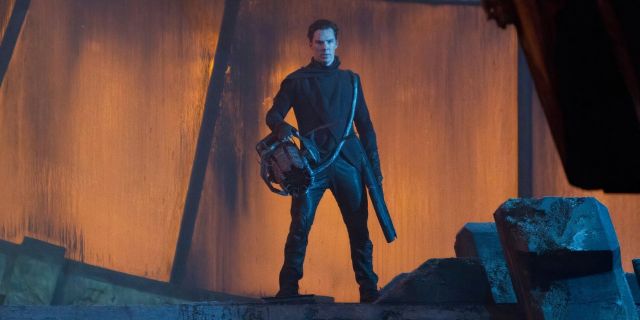
Star Trek: Into Darkness is an excellent example of how not to honor the past. It took the potential of the new movie series’ alternative timeline too literally and ended up feeling like a parody of the legendary Wrath of Khan. Star Trek has a great history of referencing and reinterpreting its canon, but new films must steer clear of iconic events, whether they revolve around Khan, Borg, or humpback whales.
Instead, Star Trek should build on the themes behind them, exploring new and distinctive ideas around the implications of the Federation’s future. The effect of technology on biological entities isn’t restricted to Khan or the Borg, and the plight of Earth in the 23rd century isn’t just about saving whales.
Take time travel; it’s a concept that has been embedded into Star Trek since its first season. Almost every generation of the franchise has enjoyed (or suffered) a memorable trip through time. It’s been decades since major blockbusters dragged audiences back into theaters with the promise of time travel. Back to the Future and The Terminator used to dominate; Star Trek could do it again.
Give Fans More Than Live-Action Star Trek
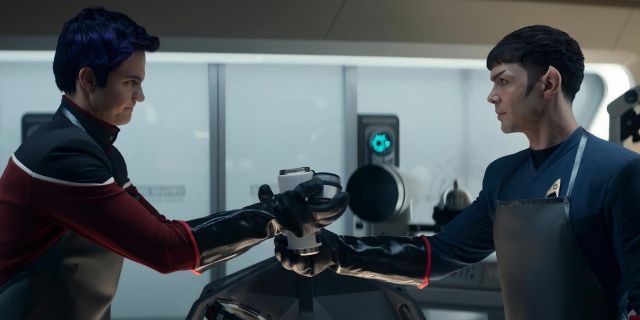
Star Trek can afford to take more risks in movie theaters than ever before. In recent years, the franchise has pushed out the envelope, from Lower Decks’s adult animation to Prodigy to Strange New Worlds’ musical episodes. In a galaxy of opportunity, just serving up a sci-fi action-adventure with drama, comedy, and CGI doesn’t cut it.
Paramount Plus adds another dimension, whether it stands alone or merges with another streamer in the future. The upcoming Section 31 has morphed from a TV show into a movie for the service that, while an excellent vehicle for Michelle Yeoh, explores a controversial part of Star Trek lore. With feature-length stories and series pushing the franchise forward on the small screen, Star Trek can take chances on cinema screens that old rivals, like Disney’s Star Wars, cannot.











Leave a Reply